Truly great films will always lead to conversations once the credits roll. Often the film’s ending will stick in the back of your mind for days after watching.
Over the years, there have been dozens of films that have sparked fascinating debate surrounding the climax. Oftentimes, these movies were designed to stimulate conversation.
Here are 10 films where the ending is still hotly debated amongst fans today. Beware, spoilers ahead.
The Graduate
Generally, comedies are not the type of film that will cause debate. However, Mike Nichols’ The Graduate isn’t like most comedies. That all comes down to the unexpected and not so clear ending.
The Graduate, which is based on the 1963 novel, follows a recent college graduate, Benjamin Braddock (Dustin Hoffman), who is seduced by an older woman but instead falls in love with her daughter, Elaine (Katharine Ross). The famous — and heavily parodied — ending sees Benjamin crash Elaine’s wedding by banging on the glass at the back of the church. The pair then escape to the street and flag down a passing bus. Strangely, the final shot sees their smiles fade to a neutral expression as they head towards a future of uncertainty.
This unexpected turn cemented the film as one of the greats in the genre.
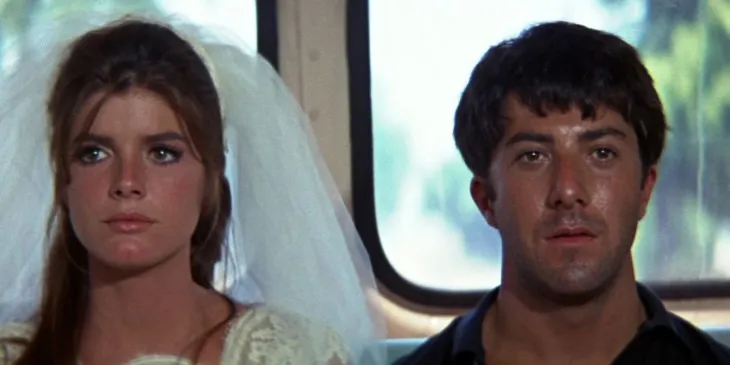 Source: Screenshot via Embassy Pictures
Source: Screenshot via Embassy PicturesThe Shining
Stanley Kubrick’s 1980 film adaption of the Stephen King masterpiece The Shining is considered to be a horror classic. Not only is it hugely influential, but it is frequently talked about to this day. Much of this discussion is surrounding the perplexing closing shot, which only adds to the film’s horror.
After attempting to kill his wife and child, we see Jack Torrence (Jack Nicholson) freeze to death in the maze at the Overlook Hotel. However, the film cuts to a photograph in the hotel hallway that dates all the way back to July 4, 1921. In the photo, we see Jack smiling with a large group of people. This suggests that he is a ghost and trapped at the hotel forever.
The ambiguity of the closing shot still has horror buffs debating 40 years later.
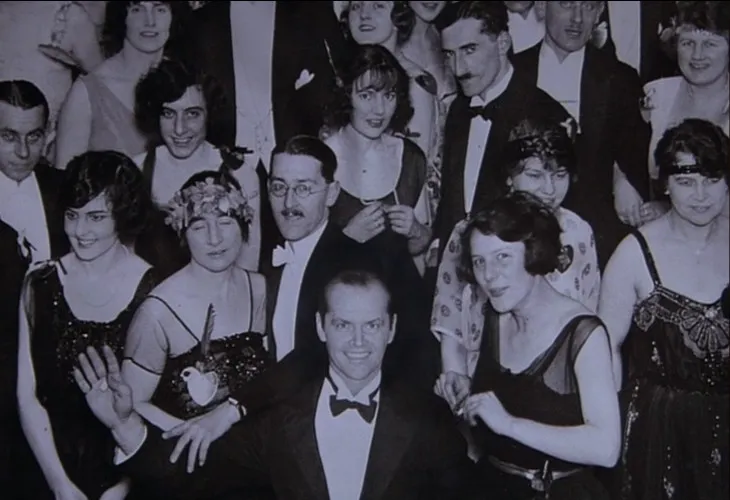 Source: Screenshot via Warner Bros. Pictures
Source: Screenshot via Warner Bros. PicturesTotal Recall
Most Arnold Schwarzenegger films aren’t the type to leave you debating for days afterward. That’s not the case for the 1990 sci-fi action classic Total Recall.
The film, directed by Paul Verhoeven, plays with the audience’s perception of reality through protagonist Douglas Quaid’s troubling dreams about Mars and a woman there. Quaid decides to go to a futuristic facility, Rekall, that implants vacation memories. He opts for a memory trip to Mars. This tangles his mind and appears to expose his true identity as a secret agent.
Whether Quaid is dreaming or not is unclear. This uncertainty reaches a much-debated climax when he saves the day with blue skies on Mars — an event foreshadowed earlier in the film.
 Source: Screenshot via TriStar Pictures
Source: Screenshot via TriStar PicturesShutter Island
Based on the novel of the same name, Martin Scorsese’s 2010 thriller Shutter Island is a gripping film with an equally intriguing conclusion.
Leonardo DiCaprio plays U.S. Marshal Teddy Daniels, who is investigating a psychiatric facility on Shutter Island. However, things are not quite what they seem. Throughout the course of the movie, Daniels is revealed to be a patient on Shutter Island. Since Daniels’ mental state continues to deteriorate, the doctors are forced to lobotomize him. Before being led away, Daniels asks his partner: “Which would be worse — to live as a monster or to die as a good man?”
This question leaves the audience questioning Daniels’ true state of mind as he is ominously taken away.
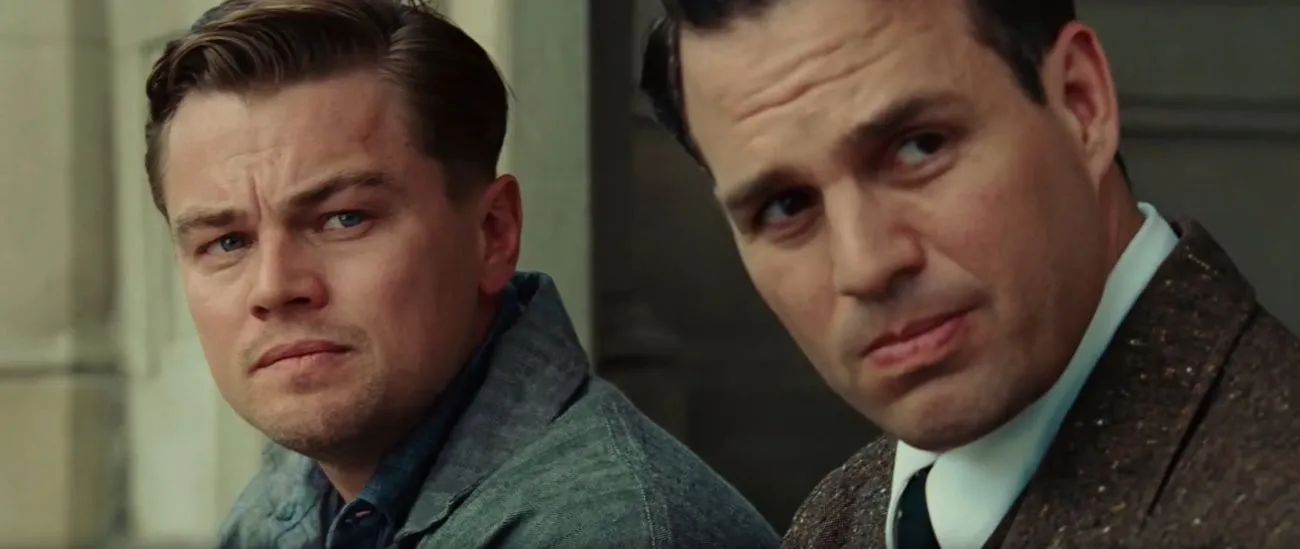 Source: Screenshot via Paramount Pictures
Source: Screenshot via Paramount PicturesDonnie Darko
The complexity of Richard Kelly’s 2001 sci-fi drama Donnie Darko makes it a much-discussed film. It follows the titular Donnie Darko, who is told by a figure in a monstrous bunny outfit that the world will end in 28 days. When Donnie returns home, he finds that a jet engine has crashed into his bedroom but nobody knows where it came from.
Donnie Darko‘s highly discussed ending has sparked plenty of debate. In particular, the closing scene where two characters that have never met wave as if they recognize each other. However, they are not sure from where. The most popular explanation involves a tangent universe, which was created by the engine falling through a corruption in time.
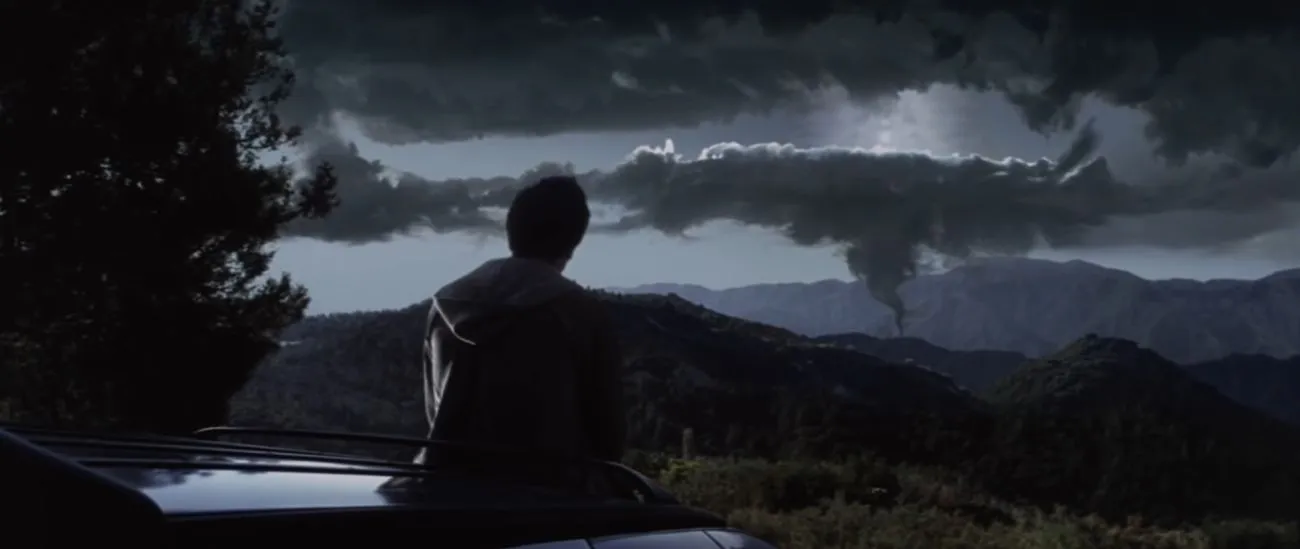 Source: Screenshot via Pandora Cinema and Newmarket Films
Source: Screenshot via Pandora Cinema and Newmarket FilmsThe Thing
Much like The Shining, John Carpenter’s The Thing is considered to be one of the all-time great horror films. Even similar, it also contains an uncertain and debated ending.
The Thing is a parasitic extraterrestrial lifeform that assimilates other organisms and, in turn, imitates them. It infiltrates an Antarctic research station and takes the appearance of the researchers, resulting in death and paranoia within the group. Once the Arctic base has been destroyed, the film concludes with the two surviving characters seated opposite each other. They share a bottle of whiskey, unsure whether or not the other one will prove to be the shape-shifting alien.
What makes The Thing so fantastic is that there’s no definitive answer. That fear of the unknown is so powerful that it will deeply affect anyone who watches it.
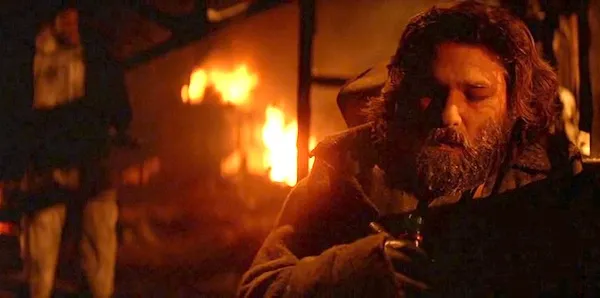 Source: Screenshot via Universal Pictures
Source: Screenshot via Universal PicturesBlade Runner: The Director’s Cut
To this day, Ridley Scott’s sci-fi masterpiece Blade Runner remains a hotly debated film. This is thanks to different interpretations and fan theories keeping it current.
The film is set in 2019 where replicants, androids that are indistinguishable from humans, are banned from Earth. As such, Blade Runners are used to hunt and kill replicants who defy the ban. Harrison Ford plays Rick Deckard, a Blade Runner on his last assignment. Throughout the film, there are clues that suggest that he is and isn’t a replicant.
The Director’s Cut added a surreal dream sequence about a unicorn. This sequence seems to suggest that Deckard is, in fact, a replicant. The famous ending sees Deckard find an origami unicorn left by his colleague Gaff, which could show that Gaff knows his dreams and he is, therefore, a machine.
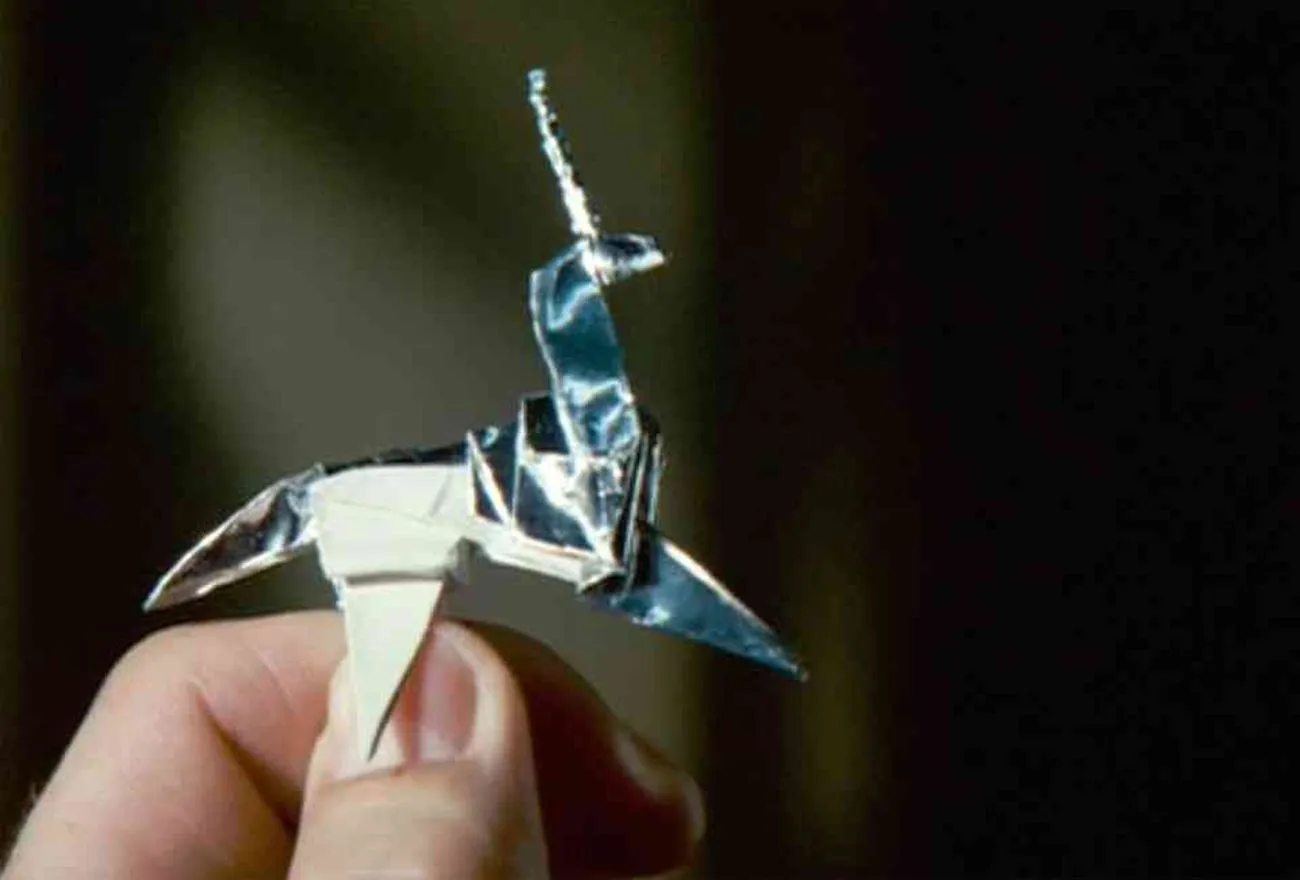 Source: Screenshot via Warner Bros. Pictures
Source: Screenshot via Warner Bros. PicturesInception
There has been no film that has sparked more debate in recent times than Christopher Nolan’s 2010 thriller, Inception. Nolan certainly knows how to engage his audience and create films that get everyone talking. Inception is the greatest example of this.
The famous ending sees Cobb (Leonardo DiCaprio) arrive home. He spins the small top — a totem which keeps on spinning if in a dream state — and then walks away to join his children. Then, the audience sees the small top continue spinning, before wobbling slightly as the screen cuts to black. This leaves the audience on the edge of their seat, unsure whether or not Cobb is dreaming.
Nolan has stated that it is deliberately ambiguous. The real point of the scene is that Cobb has left it behind and is only focused on being with his family.
 Source: Screenshot via Warner Bros. Pictures
Source: Screenshot via Warner Bros. PicturesRashomon
Considered one of the greatest films of all time, Akira Kurosawa’s Rashomon is a fascinating period drama that has had an enormous impact on modern-day cinema.
The Academy Award-winning film, made in 1950, shows varying witness accounts of a single crime. These multiple viewpoints make it unclear which, if any, of the accounts are true. This fascinating plot device has become so influential that the term “Rashomon effect” was coined. This term refers to situations where multiple eye-witness testimonies of an event contain conflicting information.
Rashomon never reveals the truth. So, each viewer is likely to have a different take on the real account, which of course generates some interesting discussions.
 Source: Screenshot via Kadokawa Daiei Studio
Source: Screenshot via Kadokawa Daiei Studio2001: A Space Odyssey
Stanley Kubrick’s 1968 sci-fi epic 2001: A Space Odyssey is one of the most intriguing and puzzling films of all time. The film explores a wide range of topics and is stuffed with metaphors and ambiguity. As a result, 2001 is mind-boggling from start to finish; particularly the famous climax.
The climax sees Dr. Bowman (Keir Dullea) travel through a vortex of lights, before seeing an older version of himself. Then, a black monolith suddenly appears. As Bowman reaches for it, he is transformed into a fetus enclosed in an orb of light. The new being then floats besides the Earth, gazing at it in a now-iconic image.
While the novelization provides greater insight, there is still no film that causes debate and wild theories more than 2001: A Space Odyssey.
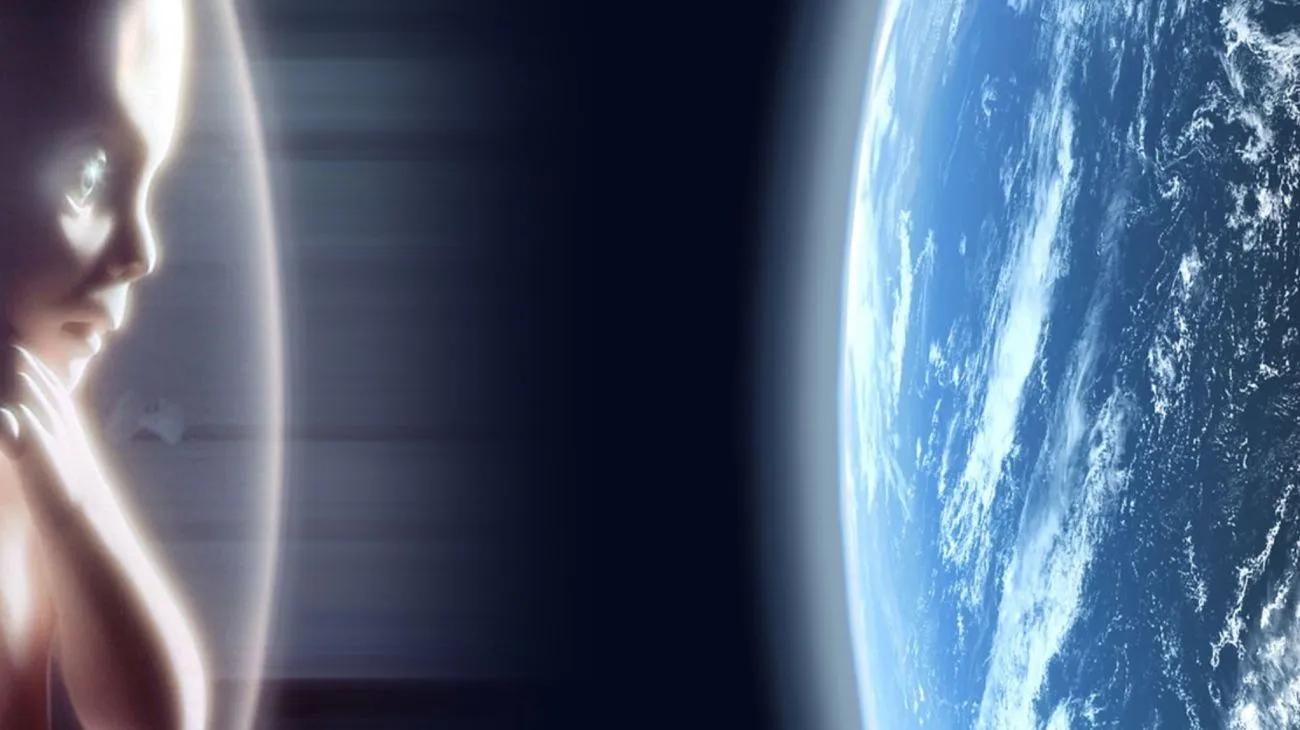 Source: Picture via Metro-Goldwyn-Mayer Studios
Source: Picture via Metro-Goldwyn-Mayer Studios